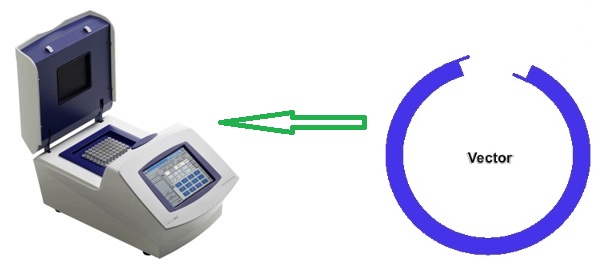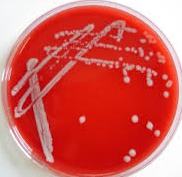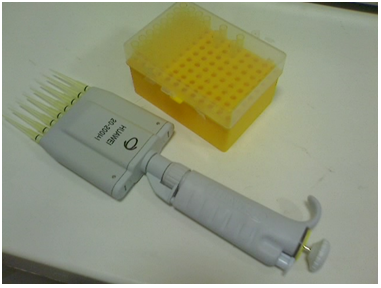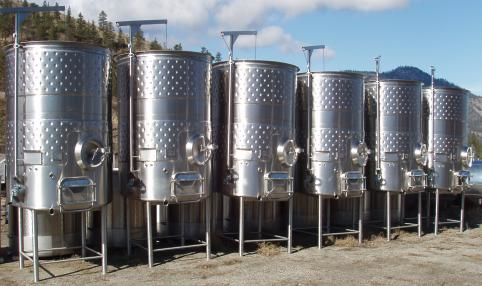Recombinant DNA (rDNA) technology or genetic engineering is the in vitro controlled manipulation of nucleic acids (DNA and RNA) in order to produce new gene products or a combination of genes with improved biological function. It is an advanced and modern form of biotechnology. In genetic engineering, the genetic makeup of living organisms (especially microorganisms) are genetically engineered through advanced experimental techniques such as gene cloning in order to introduce an exogenous DNA or gene sequence (isolated from a donor cell) that expresses a beneficial function in the recipient host cell. It is also the deliberate manipulation or alteration of the genome of an organism in order to produce useful products in large amounts.
The resulting organism whose nucleic acid (particularly DNA) has been genetically engineered is generally known as genetically modified organisms (GMOs). Several genetically modified organisms including plants, animals and microorganisms have been generated through the technology of recombinant DNA technology or genetic engineering. In agriculture for example, transgenic animals and plants with improved crop yields and animal production have also been produced by genetic engineering techniques. Transgenic animals are genetically modified animals whose genome has been genetically engineered to contain one or more genes or DNA from an exogenous source (especially DNA molecules with desired beneficial function). Transgenic plants or crops such as rice with improved vitamin A supplements have also been developed by recombinant DNA technology.
The phrase genetic engineering shall be used synonymously with recombinant DNA technology. With recombinant DNA technology, the nucleic acids of organisms (particularly the DNA) can be isolated in small fragments, purified and amplified for further molecular studies. DNA from humans, plants, animals and microorganisms can be isolated and studied by recombinant DNA technology techniques; and man’s understanding of the genome of an organism allows molecular biologists to deliberately manipulate the gene or DNA of a cell or whole organism for the expression of particulate end products. Recombinant DNA technology generally affords molecular biologists to isolate a particular gene or DNA of interest (which codes for proteins with exceptional beneficial functions) and transport same into new hosts (e.g. competent bacterial cells) using vehicles such as vectors.
Vectors are extrachromosomal DNA molecules such as plasmids that are capable of autonomous replication within a host cell; and their primary function is to transport the gene of interest or piece of DNA contained in the plasmid into host cells (e.g. bacteria). A vector or vehicle as it is often called is usually inserted or infused with the desired gene of interest to form a new DNA molecule known as recombinant DNA molecule, and this new gene or DNA is inserted into the cell by a series of genetic engineering techniques such as gene cloning technique.
Recombinant DNA technology though a new field of molecular biology has brought tremendous innovations and discoveries that have allowed the medical sciences, biomedical sciences and the pharmaceutical and food industries to blossom especially in the area of developing novel therapeutic and non-therapeutic products beneficial to mankind. For example, with an understanding of recombinant DNA technology, degradative bacteria can be developed to digest and breakdown some environmental pollutants such as oil spills and other organic and inorganic wastes in the environment.
Genetically modified crops have also been developed which are more resistant to pest and parasites; and their usage in agriculture have significantly improved food production across the globe. Genetically modified food products (e.g. probiotics) with tremendous health benefits have also been developed with the technique of recombinant DNA technology. Single cell protein (SCP) is another example of a genetically modified food product which is used for both human and animal use. In medicine, genetic engineering has been applied to unravel the mysteries surrounding some molecular diseases, and several therapeutic regimens have also been developed through it.
Insulin is a hormone produced by the islets of Langerhans in the pancreas; and it is primarily responsible for controlling the way in which our body converts sugar or glucose into useful energy. This hormone, insulin also regulates the level of sugar in the blood. When the level of glucose or sugar in the blood rises above normal (due to the lack of insulin), a disease condition known as diabetes mellitus arises. Diabetic patients lack insulin in their body, and they are mainly treated with insulin injection which takes care of the high blood sugar levels. Therapeutic insulin was initially sourced from animals in small amount, but since the advent of recombinant DNA technology, therapeutic insulin can now be produced in large amounts from recombinant Escherichia coli (a bacterium).
Several other human therapeutic products such as hormones, antibiotics and growth factors amongst others have also been developed through genetic engineering or recombinant DNA technology; and these therapeutic products have revolutionized some areas of clinical medicine. Genetic engineering also has applications in veterinary practices where several improved livestock breeding and animal fertility control practices have been developed. It is also applied in bioremediation for the development of genetically modified microorganisms used to remedy some environmental problems. Vaccine development has been greatly improved through the applications of recombinant DNA technologies; and the potentials of this field of molecular biology has unlimited possibilities.
Recombinant DNA technology makes use of various tools including restriction enzymes; insert DNA or passenger DNA molecule, and the vector or vehicle (e.g. plasmids) which transports the transformed cell bearing the gene of interest into the recipient host cell. In more general terms, recombinant DNA technology involves the separation of the gene of interest from a donor cell or organism; making modifications to the extracted/exogenous gene or DNA; and then inserting the modified gene or DNA into a recipient host cell through a vector or plasmid which transports the new DNA into the cell. This new DNA is known as recombinant DNA molecule; and it is the DNA molecule formed when two DNA molecules from two separate organisms are genetically modified and fused together. Recombinant DNA technology techniques include gel electrophoresis, gene cloning, and DNA sequencing etc.
References
Alberts B, Bray D, Lewis J, Raff M, Roberts K and Watson J.D (2002). The molecular Biology of the Cell. Fourth edition. New York, Garland, USA.
Alcamo I.E (2000). DNA Technology: The Awesome Skill. Elsevier Science and Technology Books. Philadelphia, PA, USA.
Ausubel, F.M., Brent, R., Kingston, R.E., Moore, D.D., Seidman, J.G., Smith, J.A., Struhl, K., eds (2002). Short Protocols in Molecular Biology, 5th edn. John Wiley & Sons, New York.
Bourgaize D, Jewell T.R and Buiser R.G (1999). Biotechnology: Demystifying the Concepts. Pearson Education, San Francisco, CA.
Chen I and Dubnau D (2004). DNA uptake during bacterial transformation. Nat. Rev. Microbiol. 2 (3): 241–249.
Clark D.P and Pazdernik N (2010). Biotechnology. First edition. Elsevier Science and Technology Books, Amsterdam, Netherlands.
Cooper G.M and Hausman R.E (2004). The cell: A Molecular Approach. Third edition. ASM Press.
Dale J (2003). Molecular genetics of bacteria. Jeremy W. Dale and Simon Park (4th eds.). John Wiley & Sons Ltd, West Sussex, UK. Pp. 312-313.
Das H.K (2010). Textbook of Biotechnology. Fourth edition. Wiley edition. Wiley India Pvt, Ltd, New Delhi, India.
Hames B.D and Rickwood D (1998). Gel Electrophoresis of Proteins: A Practical Approach 3rd Edition. The Practical Approach Series, Oxford University Press.
Lewis R (2004). Human Genetics: Concepts and Applications. Sixth edition. McGraw Hill Publishers, USA.
Lodish H, Berk A, Matsudaira P, Kaiser C.A, Kreiger M, Scott M.P, Zipursky S.L and Darnell J (2004). Molecular Cell Biology. Fifth edition. Scientific American Books, Freeman, New York, USA.
Madigan M.T., Martinko J.M., Dunlap P.V and Clark D.P (2009). Brock Biology of Microorganisms, 12th edition. Pearson Benjamin Cummings Inc, USA.
McPherson M and Moller S (2002). PCR: The Basics. 2nd edition. Taylor and Francis Group. New York, USA.
Sambrook, J., Russell, D.W. (2001). Molecular Cloning: a Laboratory Manual, 3rd edn. Cold Spring Harbor Laboratory Press, New York.
Singleton P and Sainsbury D (1995). Dictionary of microbiology and molecular biology, 3d ed. New York: John Wiley and Sons.
Southern, E.M. (2000). Blotting at 25. Trends in Biochemical Science, 25, 585–588.
Synder L, Peters J.E, Henkin T.M and Champness W (2013). Molecular Genetics of Bacteria. Fourth edition. American Society of Microbiology Press, USA.
Tamarin Robert H (2002). Principles of Genetics. Seventh edition. Tata McGraw-Hill Publishing Co Ltd, Delhi.
Discover more from Microbiology Class
Subscribe to get the latest posts sent to your email.





